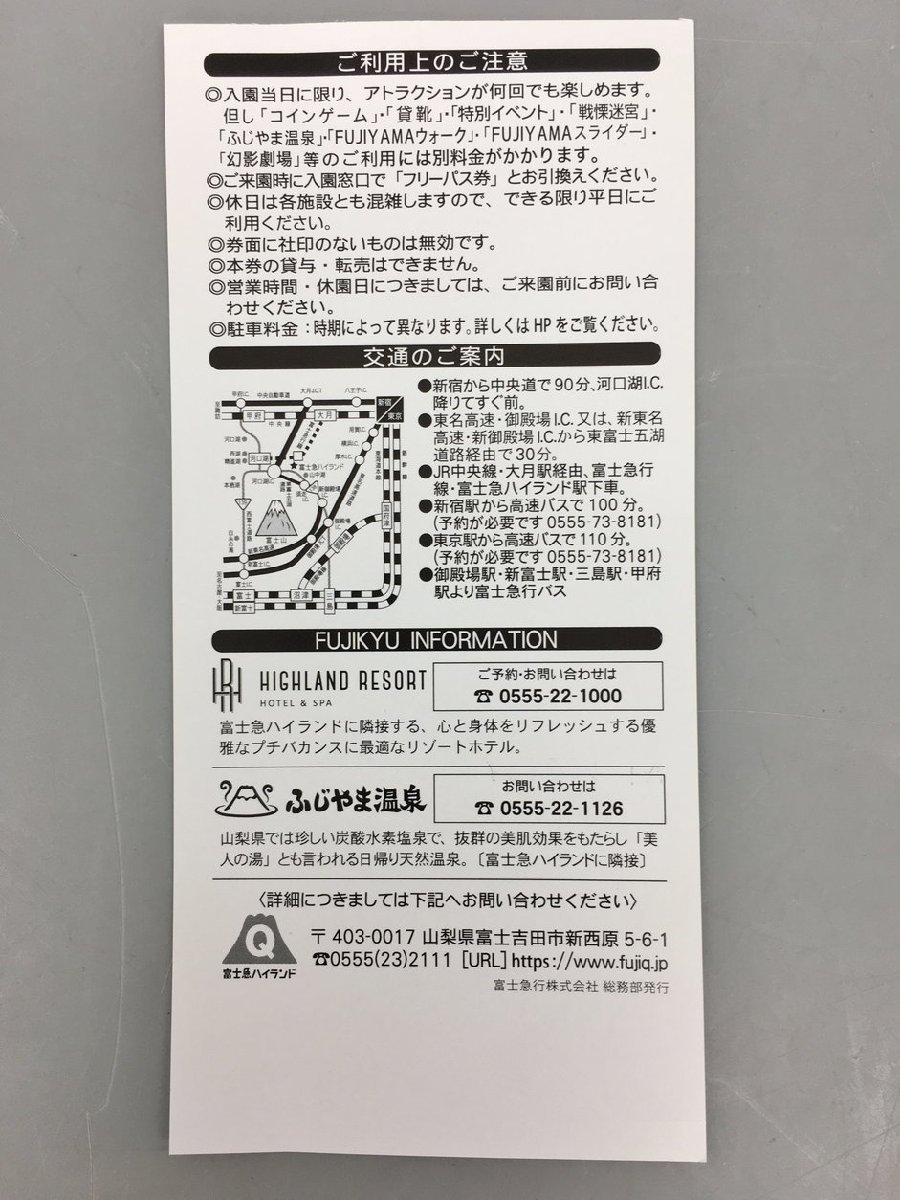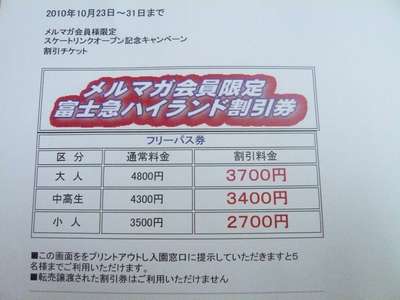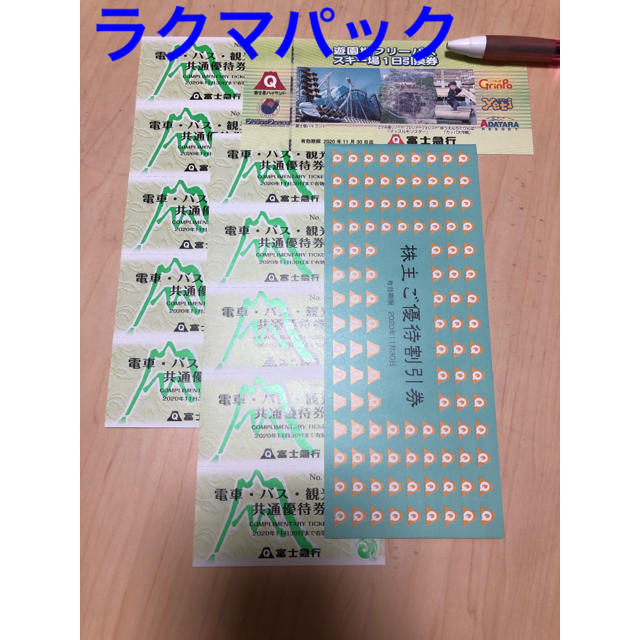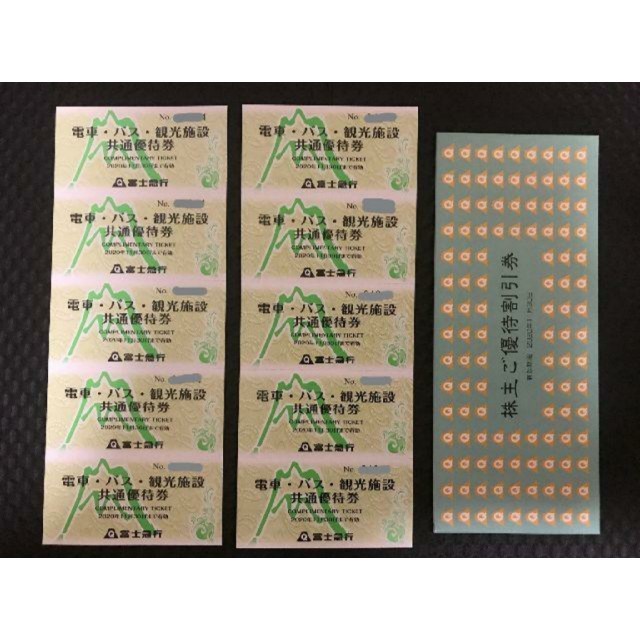富士急ハイランドフリーパス4枚(2023.9.30迄)
(税込) 送料込み
商品の説明
富士急ハイランドフリーパス4枚です。期限は2023.9.30までとなります。
なるべく迅速に対応致しますのでどうぞ宜しくお願い申し上げます。商品の情報
| カテゴリー | チケット > 施設利用券 > 遊園地/テーマパーク |
|---|---|
| 商品の状態 | 新品、未使用 |

富士急ハイランド フリーパス4枚セット 有効期限2023年9月30日 海外

富士急ハイランドフリーパス4枚(2023.9.30まで)-

期限長9月末!】富士急ハイランドチケット2枚 | www.mdh.com.sa

富士急ハイランド】1日フリーパス 完売 8032円 www.geyrerhof.com

富士急ハイランド 1day フリーパス-

富士急ハイランド フリーパス招待券 大特価!! www.coopetarrazu.com

富士急ハイランド フリーパス4枚セット 有効期限2023年9月30日 | www

富士急ハイランド チケット ペアフリーパス 期限 2023年9/30まで

富士急行 遊園地パスポート 富士急ハイランド フリーパス 4枚セット

富士急ハイランド フリーパス 4枚 culto.pro

現品限り一斉値下げ!】 富士急ハイランドフリーパス引換券 2枚 遊園地

富士急ハイランド 1day フリーパス-

富士急ハイランド フリーパス | mdh.com.sa

純正品 富士急ハイランド チケット 2枚 ※2023.9月末まで有効 遊園地

販売商品の販売 富士急ハイランド フリーパス 2枚 遊園地/テーマパーク

富士急ハイランド 1day フリーパス-

富士急トラベル Fujikyu Travel CO.,LTD - ≪#富士急ハイランド

富士急ハイランド 1day フリーパス-

富士急ハイランド フリーパス2枚セット | mdh.com.sa

富士急行 遊園地フリーパス スキー場1日引換券 有効期限2022年11月30日

富士急ハイランド 1day フリーパス-

公式ショップ】 ☆値引 ☆2枚セット 富士急ハイランド フリーパス 9月

富士急 ハイランド フリーパス 2枚組 2枚セット 引換券 ☆-

富士急ハイランド 1day フリーパス-

富士急ハイランド「学生思い出応援キャンペーン」2023年2月4日(土

チケットを見る | 富士急ハイランド

富士急行 株主優待券 富士急ハイランド フリーパス 売れ筋ランキングも

exercitesportes.com.br

富士急ハイランド】1日フリーパス-

富士急ハイランド フリーパス2枚セット | mdh.com.sa

富士急ハイランド「学生思い出応援キャンペーン」2023年2月4日(土

ネコポス発送!富士急ハイランド パスポート引換券 4枚 写真チケットを

富士急ハイランド フリーパス 2枚分-

2名分)富士急ハイランド フリーパス-

富士急ハイランド】1日フリーパス-

富士急ハイランド フリーパス 4名分 有効期限:2022/2月末-

ショッピングを通販 【4枚セット】富士急ハイランド フリーパス招待券
![グリーンランド 株主優待券/遊園地等入場券[2枚]/2023.9.30までの](https://img.fril.jp/img/604689610/l/1908859716.jpg)
グリーンランド 株主優待券/遊園地等入場券[2枚]/2023.9.30までの

富士急ハイランド フリーパス4枚セット 有効期限2023年9月30日 海外

富士急 ハイランド フリーパス 2枚組 2枚セット 引換券 ☆-

商品の情報
メルカリ安心への取り組み
お金は事務局に支払われ、評価後に振り込まれます
出品者
スピード発送
この出品者は平均24時間以内に発送しています














